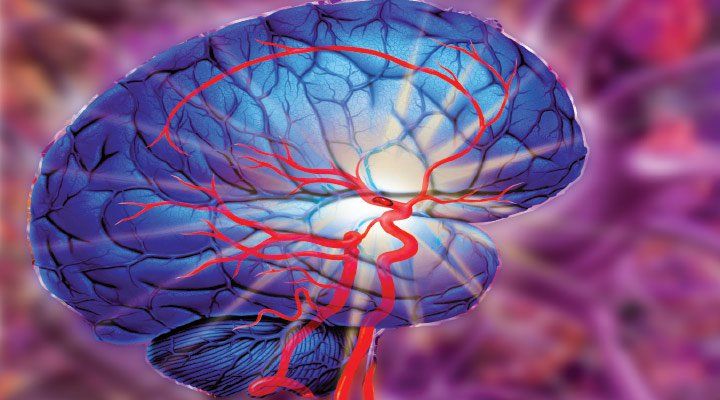The Acute Ischemic Stroke (AIS) Diagnosis and Treatment Market focuses on medical technologies, diagnostics, and therapeutic interventions used to manage acute ischemic strokes—strokes caused by a blockage in a blood vessel supplying the brain, leading to loss of function in the affected brain area. The market is growing due to advancements in diagnostic tools, increased prevalence of strokes, and innovations in treatment options aimed at reducing the damage caused by strokes and improving patient outcomes.
Here is an overview of the Acute Ischemic Stroke Diagnosis and Treatment Market, covering its size, growth factors, trends, and challenges.
1. Market Size and Growth
Market Size
- Global Valuation: The global acute ischemic stroke diagnosis and treatment market was valued at approximately USD 2.8 billion in 2023 and is projected to reach around USD 5.5 billion by 2030, growing at a compound annual growth rate (CAGR) of about 8-9% during the forecast period.
- Market Segmentation: The market is segmented by product type (diagnostic imaging, pharmaceuticals, and surgical interventions), treatment approach (thrombolysis, thrombectomy, anticoagulation therapy), end-users (hospitals, clinics, diagnostic centers), and region.
Growth Drivers
- Increasing Stroke Incidence: The rising prevalence of ischemic stroke, driven by an aging population and risk factors such as hypertension, diabetes, and obesity, is a primary driver of market growth.
- Technological Advancements in Imaging: Continuous improvements in diagnostic imaging techniques, such as CT, MRI, and advanced angiography, are enhancing early stroke detection and treatment.
- Innovations in Stroke Treatment: The development of new drugs (such as thrombolytics) and advancements in surgical interventions (such as mechanical thrombectomy) are improving patient outcomes, boosting market demand.
- Rising Awareness and Access to Healthcare: Increased awareness of stroke symptoms and expanded access to specialized stroke care centers are driving the demand for timely diagnosis and treatment.
Regional Insights
- North America: Dominates the market due to high healthcare spending, the presence of advanced medical infrastructure, and a high burden of cardiovascular diseases, including stroke.
- Europe: Holds a substantial share due to the aging population and well-established healthcare systems.
- Asia-Pacific: Expected to witness the highest growth due to rising stroke incidence, improving healthcare infrastructure, and increased awareness about early stroke management.
- Latin America and Middle East & Africa: Emerging markets with growing healthcare needs and increasing focus on reducing stroke-related mortality.
2. Key Components of the Market
Product Types
- Diagnostic Imaging
- CT Scans (Computed Tomography): Widely used to quickly detect strokes and assess the affected brain region.
- MRI (Magnetic Resonance Imaging): Provides detailed images of brain tissue, allowing for precise diagnosis and assessment of ischemic damage.
- Cerebral Angiography: Used to visualize blood vessels in the brain, often critical for diagnosing blockages and planning interventions.
- Pharmaceuticals
- Thrombolytics (e.g., tPA – tissue plasminogen activator): Drugs that dissolve clots and are used in early-stage stroke treatment.
- Anticoagulants and Antiplatelets: Medications used to prevent clot formation and manage risk factors for stroke recurrence.
- Neuroprotective Agents: Drugs under development aimed at protecting brain tissue during and after a stroke.
- Surgical Interventions
- Mechanical Thrombectomy: A minimally invasive procedure to remove the clot causing the stroke. Its use is growing due to the effectiveness in reducing stroke-related disabilities.
- Carotid Endarterectomy: Surgical removal of blockages from carotid arteries to prevent future strokes.
Treatment Approaches
- Thrombolysis
- Description: Intravenous administration of thrombolytic drugs like tPA to dissolve clots and restore blood flow.
- Time-Sensitive: Most effective when administered within 4.5 hours of stroke onset.
- Mechanical Thrombectomy
- Description: Endovascular procedure to physically remove the clot, especially effective for large artery occlusions.
- Expanded Window: Can be performed up to 24 hours after stroke onset in selected patients.
- Anticoagulation Therapy
- Description: Used to prevent the formation of new clots, especially in patients with atrial fibrillation or other clotting disorders.
- Chronic Management: Key in preventing recurrent strokes.
End-Users
- Hospitals and Stroke Centers
- Usage: Major providers of both diagnostic imaging and treatment, often equipped with specialized stroke units.
- Impact: High patient throughput and advanced care capabilities.
- Diagnostic Centers
- Usage: Centers specializing in diagnostic imaging services, providing critical stroke diagnosis.
- Impact: Growing role due to the increasing reliance on imaging for early detection.
- Ambulatory Care and Clinics
- Usage: Provide long-term management and follow-up care for stroke patients.
- Impact: Important in outpatient stroke care and rehabilitation.
3. Key Factors Driving the Market
Rising Stroke Prevalence
- Global Burden: Stroke remains one of the leading causes of death and disability globally. The aging population and rising prevalence of lifestyle diseases (e.g., hypertension, diabetes) are contributing to increased stroke cases, fueling demand for diagnosis and treatment solutions.
Advancements in Diagnostic Imaging
- Early Detection: Technologies such as CT perfusion and MRI diffusion imaging are improving the ability to diagnose ischemic strokes quickly and accurately, allowing for timely treatment.
- Artificial Intelligence (AI): AI integration in stroke imaging is aiding radiologists by providing real-time analysis and improving the accuracy of diagnosis.
Innovative Stroke Treatments
- Thrombectomy Devices: Continuous improvements in thrombectomy devices have extended the time window for treating stroke patients, resulting in better outcomes.
- Neuroprotective Drugs: Ongoing research into neuroprotective therapies is expected to reduce brain damage during strokes, improving recovery.
Public Awareness Campaigns
- F.A.S.T. Campaigns: Public health initiatives promoting the recognition of stroke symptoms (Face drooping, Arm weakness, Speech difficulty, Time to call emergency services) are driving earlier presentation to hospitals, which is critical for improving treatment success rates.
4. Trends
Growth of Telemedicine in Stroke Care
- Telestroke Networks: Expanding the use of telemedicine to diagnose and triage stroke patients in remote or underserved areas, ensuring timely treatment decisions.
- Remote Consultations: Use of telemedicine to provide specialist consultations and assessments in real-time.
AI-Driven Diagnostics
- AI in Imaging: AI is increasingly used in analyzing imaging data for faster, more accurate stroke diagnosis and determining eligibility for treatments like thrombectomy.
- AI Algorithms: Integration of machine learning algorithms to identify stroke types and predict outcomes based on patient data.
Expansion of Thrombectomy
- Expanded Time Window: Recent clinical trials have demonstrated the effectiveness of thrombectomy up to 24 hours after stroke onset, increasing its use.
- Increased Adoption: Growing availability of thrombectomy devices and specialized care centers is improving access to this life-saving treatment.
Development of Neuroprotective Drugs
- Ongoing Research: Neuroprotective agents aim to limit brain damage during ischemic stroke, with several promising candidates in clinical trials.
- Combination Therapy: Potential for combining thrombolytics with neuroprotective drugs to enhance recovery outcomes.
5. Challenges
Limited Time Window for Treatment
- Time Sensitivity: Treatments like thrombolysis (tPA) and mechanical thrombectomy must be administered within a limited time frame after stroke onset, limiting their use.
- Public Awareness: Delays in recognizing stroke symptoms can prevent patients from receiving timely treatment.
High Treatment Costs
- Cost of Intervention: Advanced treatments such as thrombectomy and neuroimaging can be expensive, limiting accessibility in low- and middle-income regions.
- Insurance and Reimbursement Issues: In some regions, the lack of adequate insurance coverage or reimbursement policies can be a barrier to accessing stroke treatments.
Infrastructure Limitations
- Access to Specialized Stroke Centers: Not all regions have access to stroke centers equipped with the latest diagnostic tools and treatments like thrombectomy.
- Skilled Workforce: A shortage of neurologists and interventional radiologists, particularly in developing countries, hampers the availability of advanced stroke care.
Regulatory and Approval Delays
- Drug Development: The development and approval process for new treatments, particularly neuroprotective agents, can be slow due to stringent regulatory requirements and the complexity of stroke pathology.
Click Here, To Get Free Sample Report https://stringentdatalytics.com/sample-request/acute-ischemic-stroke-diagnosis-and-treatment-market/15641/
Market Segmentations:
Global Acute Ischemic Stroke Diagnosis and Treatment Market: By Company
Abbott
Medtronic
Boston Scientific
Cordis
Philips
GE Healthcare
Siemens
Stryker
Genentech
Merck
Global Acute Ischemic Stroke Diagnosis and Treatment Market: By Type
Computed Tomography (CT)
Magnetic Resonance Imaging (MRI)
Carotid Ultrasound
Cerebral Angiography
Electrocardiography
Echocardiography
Others
Global Acute Ischemic Stroke Diagnosis and Treatment Market: By Application
Hospital
Specialty Clinic
Others
Global Acute Ischemic Stroke Diagnosis and Treatment Market: Regional Analysis
The regional analysis of the global Acute Ischemic Stroke Diagnosis and Treatment market provides insights into the market’s performance across different regions of the world. The analysis is based on recent and future trends and includes market forecast for the prediction period. The countries covered in the regional analysis of the Acute Ischemic Stroke Diagnosis and Treatment market report are as follows:
North America: The North America region includes the U.S., Canada, and Mexico. The U.S. is the largest market for Cold-chain Pharma in this region, followed by Canada and Mexico. The market growth in this region is primarily driven by the presence of key market players and the increasing demand for the product.
Europe: The Europe region includes Germany, France, U.K., Russia, Italy, Spain, Turkey, Netherlands, Switzerland, Belgium, and Rest of Europe. Germany is the largest market for Cold-chain Pharma in this region, followed by the U.K. and France. The market growth in this region is driven by the increasing demand for the product in the automotive and aerospace sectors.
Asia-Pacific: The Asia-Pacific region includes Singapore, Malaysia, Australia, Thailand, Indonesia, Philippines, China, Japan, India, South Korea, and Rest of Asia-Pacific. China is the largest market for Cold-chain Pharma in this region, followed by Japan and India. The market growth in this region is driven by the increasing adoption of the product in various end-use industries, such as automotive, aerospace, and construction.
Middle East and Africa: The Middle East and Africa region includes Saudi Arabia, U.A.E, South Africa, Egypt, Israel, and Rest of Middle East and Africa. The market growth in this region is driven by the increasing demand for the product in the aerospace and defense sectors.
South America: The South America region includes Argentina, Brazil, and Rest of South America. Brazil is the largest market for Cold-chain Pharma in this region, followed by Argentina. The market growth in this region is primarily driven by the increasing demand for the product in the automotive sector.
Click Here, To Buy Premium Report https://stringentdatalytics.com/purchase/acute-ischemic-stroke-diagnosis-and-treatment-market/15641/?license=single
Reasons to Purchase this Report
- Market segmentation based on qualitative and quantitative analysis, taking into account both economic and non-economic aspects.
- Data on market value (in US dollars) for each section and sub-segment
- Identifies the area and market segment anticipated to experience the quickest growth and hold the majority of the market.
- Analysis by geography showcasing product/service usage in the region and highlighting the market dynamics affecting each region.
- A competitive landscape that takes into account recent service/product launches, collaborations, company expansions, and acquisitions by the companies profiled, as well as the market share of the leading players.
- Comprehensive company profiles for the top players in the industry, including business overviews, corporate insights, product benchmarking, and SWOT analyses
- The industry’s future market forecast in light of recent changes, including growth possibilities, drivers of growth, and obstacles present in both developing and emerging economies.
- Comprises a thorough examination of the market from a number of angles using Porter’s Five Forces analysis.
- Offers market knowledge across the Value Chain
- The current market dynamics scenario and future market expansion prospects
- Post-sales analyst assistance for six months
About Stringent Datalytics
Stringent Datalytics offers both custom and syndicated market research reports. Custom market research reports are tailored to a specific client’s needs and requirements. These reports provide unique insights into a particular industry or market segment and can help businesses make informed decisions about their strategies and operations.
Syndicated market research reports, on the other hand, are pre-existing reports that are available for purchase by multiple clients. These reports are often produced on a regular basis, such as annually or quarterly, and cover a broad range of industries and market segments. Syndicated reports provide clients with insights into industry trends, market sizes, and competitive landscapes. By offering both custom and syndicated reports, Stringent Datalytics can provide clients with a range of market research solutions that can be customized to their specific needs.
Contact Us
Stringent Datalytics
Contact No- +1 346 666 6655
Email Id- sales@stringentdatalytics.com




Leave a Reply